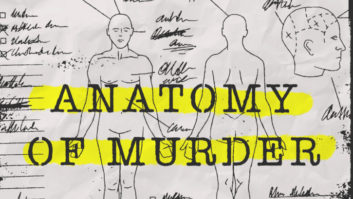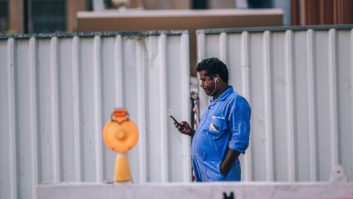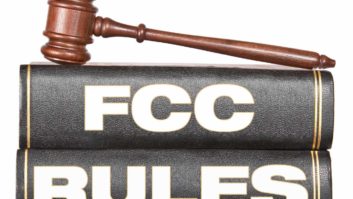The author has published technical articles on digital radio and lives in a city served by DAB+ digital broadcasting.
The United States can solve the interference and coverage problems in HD/AM/FM using DRM+ in the vacant analog TV Channels 2–6. This will mean all broadcasters can be selected by name and not a number.
An outsider can see that in the United States there are 4,721 AM stations, which share 117 medium-frequency (MF) channels.
AM is suffering from poor sound quality with increasing noise from arcing sources and transformerless power supplies. There is no domestic high-frequency (shortwave) broadcasting. There are also 10,704 high-powered and 814 low-power FM stations, and this number will soon rise to a maximum of 16,239 transmitters, as when AM broadcasters can add an FM transmitter to areas of poor coverage, all of which share the 100 available FM channels.
HD Radio in its FM/digital mode has a 98.4 kbps main digital audio channel, which is sufficient for good quality audio, but its 20.2 kbps used for its supplementary audio such as HD2 and AM digital audio is poor for music.
EXISTING PROBLEMS
The digital coverage area is less than for the AM and FM signals, with the supplementary channels being even smaller. This causes the receiver to blend the main digital and analog signals when the reception is poor, and when it becomes poorer still, the FM stereo blends back to monophonic. HD2 channels just drop out under these conditions. Added to this, pre-emphasis is required prior to FM transmission, which means that the sharpness of loud sounds is reduced in processing.
The digital component of the transmitted signal interferes with the adjacent channel either side of the main channel. This causes interference, particularly bad in HD AM at night.
There are no “on-channel repeaters” for HD Radio to fill pockets of poor reception because they only work for purely digital signals. FM translators have to be used, and they transmit on a different frequency than the main station.
Cell phone and Internet broadcasting is on the rise; however for broadcasters, the price skyrockets as the number of simultaneous listeners increases. It would appear that relatively few cell phones and tablets contain an enabled radio receiver; this is not the case outside the United States.
The U.S. has only 39 low-powered DTV transmitters in Band 1 (Channels 2–6) and 426 in Band 3 (Channels 7–13).
THE SOLUTION
The current problems of comparatively small digital coverage areas, interference, poor sound and overcrowding are solved by using pure digital transmission system(s), where they are surrounded by similar digital signals of approximately the same power and type. This means that the appropriate power for the coverage area can be specified by the FCC. Listeners will then receive a perfect signal more often without a reduction of coverage area.

Fig. 1: Existing and potential spectrum available for broadcasting. Note top labels. DAB+/DRM listeners do not need to remember frequencies or channel numbers, just the broadcasters’ names.
Digital Radio Mondiale can operate at any frequency below 108 MHz. The DRM+ version shown in Fig. 1 can carry a single 128 kbps high-quality audio program, a pair of 64 kbps music programs or multiple talk programs along with other data. It is configurable by the broadcaster.
Digital Audio Broadcasting Plus can carry up to 18 x 64 kbps music programs. It is also configurable as to what you broadcast. In both systems all program and data has the same coverage area.
DAB+ would have to share spectrum with digital television’s Channels 7–13. DRM+ can use the vacated analog TV Channels 2–6. The FCC will need to investigate if 47–50 MHz is being actively used, and finally once pure digital radio is well established, it can release the FM band to DRM+.
DRM+ would occupy a “greenfield” piece of the spectrum. Each channel is 100 kHz wide, which is a quarter of that occupied by an HD Radio signal on the FM band. The available data rate, which is selectable by the broadcaster, is between 37.2–186.3 kbps. The selected data rate will depend on the transmitter power, the diameter of the coverage area, the terrain and the number of on-channel repeaters. Antennas in DRM are vertical (at right angles to the horizon), which makes vertical vehicle antennas omnidirectional. There is one transmitter per broadcaster and is capable of high-quality surround sound, pictures, text, traffic data, etc.
DAB+ Channels 5A–10D as well as 11B makes 25 transmission channels carrying up to 18 x 64 kbps stereo sound channels each. This is a total of 460 programs, although some of those 64 kbps streams may be used for advertising pictures and traffic data instead. DAB+ Channels 5A–10D would have to share with television. The TV transmissions have the antenna elements horizontal, but DAB+ uses vertical antenna elements. The different polarizations allow transmitters on the same frequency to be closer together in distance without causing interference. A pair of 50 kW ERP DAB+ transmitters on the same transmission channel must be separated by at least 336 km (208 miles).
In both the above systems, the entire signal is at the same power, and there are no broadcast licence fees. The device manufacturer pays the patent based on device sales, e.g. royalties to Dolby for the use of the HE AAC+ compression system.
By comparison, the all-digital HD Radio in the FM band has a data rate of 24.8–99.3 kbps, but the secondary channel is of lower power. All-digital HD AM also requires the transmission of a high-powered carrier which contains no information and increases the transmitter’s power costs. This does not occur in DRM or DAB+. The compression system is secret, so a sound quality comparison, with Dolby’s HE AAC+ has to be subjectively tested at a range of data rates to see which sounds better. HD Radio channels overlap each other, whereas DRM+/DAB+ do not, which allows an adjacent channel to carry another program even in the same coverage area, even on the same antenna.
The dark blue frequencies would be ideal for areas of low population density, such as Alaska, Wyoming Montana, the Dakotas, New Mexico, Idaho, Nebraska and Nevada. Satellite and HF radio transmissions in Alaska are occasionally affected by aurora borealis, which will cause digital signals to breakup or be absent.
DRM30 can be used in the medium- (AM) and high-frequency (SW) bands, whereas HD Radio only works in the medium-frequency band.
There are 218 channels available in AM/FM radio. There is a minimum of 298 DRM+ channels and 60 domestic HF channels available now. In addition there are 24 DAB+ channels available which will have to be shared with TV.
RECEIVER AVAILABILITY
Frontier Silicon’s Chorus 4 and NXP’s SAF356 single-chip receivers can now demodulate DAB+, DRM HD Radio, FM and AM in the medium-, high- and very high-frequency ranges.

Fig. 2: The frequencies above use amplitude modulation (AM). DRM30 can replace AM, giving clear, interference-free stereo sound even in the HF (shortwave) bands.
India now covers the whole of its population of 1.3 billion (over three times that of the United States) with DRM30, and it proposes to switch off AM radio by 2017. Therefore, a range of radios will be available in large quantities soon.
DAB+ is well established in Europe and Australia and is spreading in Asia, where there are quite a few radios available at a price little more expensive than their AM counterparts. Very few of these radios receive AM.
IMPLEMENTATION
Radio should copy the system used by the United States for digital TV:
1. Select a switch off date. (Congress selected a date 10 years ahead; however it was delayed an extra three years due to poor public awareness.)
2. Select a start date after which all new devices must comply to the latest ETSI standards at profile level 2 as specified by DAB+ and DRM, including 47–108 MHz DRM+ reception. A device includes all radios capable of receiving broadcasts, including factory installed and after-market auto radios; cell phones; tablets; home theater amplifiers; and portable playing devices.
All devices will be able to respond to the Emergency Warning system; display color images, text and Electronic Program Guide; and be able to select the best signal from that broadcaster using the Alternate Frequency Tables. Automotive receivers in addition will be able to respond to traffic data. (Congress set the TV start date two years prior to switch-off. On reflection this date should have been halfway between switch-off and the decision to switch to digital. This earlier date reduces the need for subsidies to receiver purchasers but yet allow enough time for broadcasters to commence digital transmission.)
3. The FCC should require all broadcasters to transmit the Alternate Frequency Signalling by RDS for FM stations and Amplitude Modulation Signalling System on AM stations to make new receivers automatically select the best signal from that broadcaster regardless of the signal type and frequency. This will also mean that all of the additional program stream names will appear in the list of program names on the receiver.
4. The FCC immediately should create transmitter specification and nationwide multi-level grid with each level representing an effective radiating power of the main transmitter and its channel frequency. This grid can then be used to allocate frequencies, and powers with sufficient physical separation. FCC also needs to analyze the feasibility of DAB+ using Channels 5A–10D, 11D in large cities.
5. Allow use of the new DRM/DAB+ channels to be without licence fees until the AM/FM switch-off date.
FOR FURTHER INFORMATION:
DRM Introduction and Implementation Guide
http://www.drm.org/?page_id=19
“Overview of the DAB+ System” by Les Sabel for WorldDAB
http://bit.ly/1rxJYxZ
“The Successful Implementation of High-Performance Digital Radio Receivers,” Analog Devices, Vol. 47.1, page 13
http://bit.ly/1pdCo9U
SiDRADIO, DRM radio construction project, November 2013, Silicon Chip magazine
http://bit.ly/1p7bbzL
In conclusion, all broadcasters in a given license area should be given the same DRM+ channel width and the same transmission power and antenna height, so they can choose what they will broadcast. Options include music, speech, Journaline (news text), weather, pictures to go with advertising, captioning for the hard of hearing and extensive road traffic data, etc.
The adoption of DRM/DAB+ in the manner described above allows broadcasters to control their transmission cost rather than letting the telcos do it for them.
Comment on this or any story. Write to[email protected]with “Letter to the Editor” in the subject field.
Reach Alan Hughes at[email protected].












